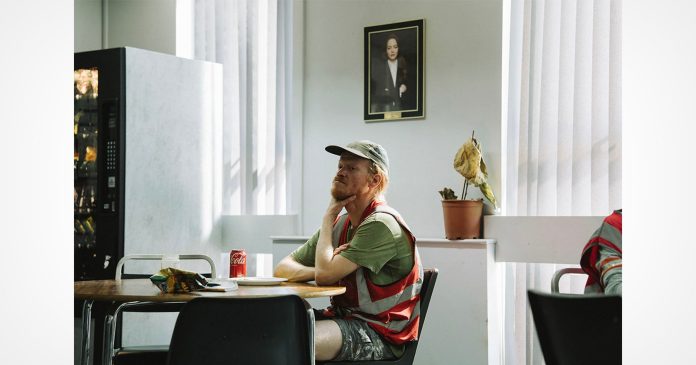
It’s very strange to watch a movie in 3:2 or 4:3 aspect ratios. As photographers, those are kind of our aspect ratios, while Hollywood’s have traditionally been the ultra-wide 2.39:1. But rules are made to be broken.
Of course, it wasn’t always this way. Hollywood started out in 4:3 (technically 1.37:1), and some of the early 20th century’s most famous movie productions are shot in the almost square format, à la Citizen Kane, Casablanca, and The Wizard of Oz.
But as a child of the 1990s and 2000s, when I first watched a modern film set in modern times in 4:3 — Saltburn (2023) — I spent most of the film dumbfounded by the shape of the picture I was watching. Saltburn had a limited theatrical release as it was made by Amazon MGM. Most people, including myself, watched it on television, which is ironic because it was the advent of TV that prompted Hollywood to ditch 4:3 for ultra-wide in the first place.
But this past weekend, I watched Yorgos Lanthimos’s Bugonia in a theater and, well, I was blown away. The film is shot in 1.50:1, which is 3:2 — the same shape as a classic 35mm camera. If you aren’t familiar with Greek filmmaker Lanthimos, he is an accomplished photographer as well as one of Hollywood’s hottest directors.
Teaming up with cinematographer Robbie Ryan, Lanthimos uses his photographic eye to quite brilliantly execute shots in Bugonia. With Saltburn, I felt the 4:3 format was there to emphasize the shocking nature of the film. But with Bugonia, Ryan and Lanthimos use the tall aspect ratio to exquisitely include details in the top and bottom of the frame.
Lanthimos describes Bugonia as “contained.” Indeed, much of the film takes place in a basement, which plays to the strengths of 3:2 as what’s happening beneath or above the actors is often more important than what’s happening to the side of them.
Bugonia borrows another format from the 20th century that is making a strong comeback in the 2020s: VistaVision film. Ryan tells Variety that although the format achieves spectacular resolution, color, and texture — it is also difficult to work with.
“The camera pushes the film horizontally through the gate instead of vertically,” Ryan says. “So you get brand new problems that I didn’t know existed, which is camera jams. We ended up using it in the film. It’s interesting looking.”
Ryan adds that, “if you know Yorgos Lanthimos films, you will probably recognize that he loves quite a low angle for most of his shots.” The cinematographer says that Lanthimos’s style has rubbed off in him. “If there’s ever a shot at normal height, he’s like, ‘What’s this about? It’s horrible’.”
Lanthimos, who hails from Athens, is known for his surreal movies that play on themes of authority, society, and human behavior. Bugonia, a sci-fi film that is kind of about bees, touches on all of these topics, as well as some that are pertinent to 2025.








